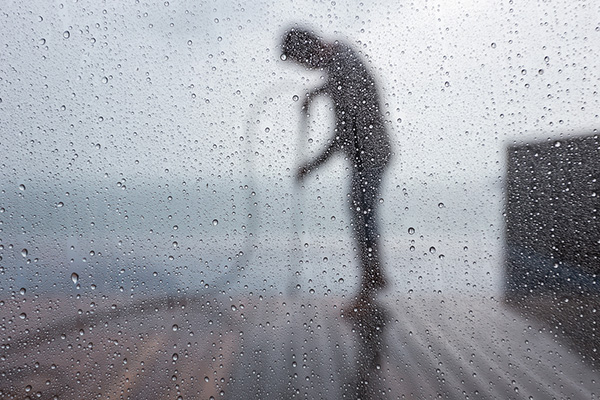Increased safety dangers working in cold weather

Cold weather brings increased dangers for those working in the elements, with cold, wet and windy conditions increasing slip hazards and also having the potential to cause frost bite, hypothermia and trench foot.
With the southern states such as Tasmania, Victoria, SA, ACT and parts of NSW often experiencing freezing overnight temperatures – especially during winter, workers may face slippery and possibly icy conditions on worksites.
With falls from height the number one cause of death in construction, slippery conditions are particularly concerning for those working at height.
The use of a safety harness is mandatory while wearing appropriate non-slip footwear will also help you stay connected.
Furthermore, strong and bitingly cold winds often blow off the Southern Ocean or Snowy Mountains during winter, increasing the dangers for those working at heights, as well as increasing the wind chill factor and associated risks to any person working outdoors.
In its Managing the Work Environment and Facilities Code of Practice, Workcover NSW states that in addition to wind chill, thermal comfort is “affected by many factors, including air temperature, floor temperature, humidity, clothing, the amount of physical exertion, average temperature of the surroundings and sun penetration.”
The code states that because it may not be possible to eliminate cold exposure, risks should be minimised where possible by providing localised heating, protection from wind and rain, the provision of warm (and if necessary waterproof) clothing and the opportunity for workers to acclimatise with job rotation and regular rest breaks, among other measures.
Workers should also be provided with fit-for-purpose PPE such as thermal-lined water resistant gloves that keep the hands warm and protect against moisture, while retaining dexterity and feel.
With water conducting heat away from the body 25 times faster than air, staying dry is imperative. Boots should also be waterproof and insulated.
Symptoms to watch out for
While the human body is quite efficient at acclimatising to heat exposure, it less able to adapt to cold conditions, according to the JobSafe SA Association, with serious cold-related illnesses occurring when the body is unable to warm itself.
“Cold related illness can slowly overcome a person who has been chilled by low temperatures, brisk winds or wet clothing,” the Association states.
Lowering of body temperature (hypothermia) has an effect on the brain, causing erratic behaviour and numbness, muscular weakness and cramps,” it says, adding that hypothermia can occur when land temperatures are above freezing or water temperatures are below 37° C.
Cold and moisture exposure may also cause frostbite, trench foot and chilblains. All cases of cold illness must be taken seriously, with medical attention a priority.
Immediate assistance should be provided if any worker has numbness in the hands or fingers, uncontrolled shivering, loss of fine motor skills (particularly in hands) slurred speech, difficulty thinking clearly and irrational behaviour.
Monitoring and training workers and encouraging them to report any issues are also essential components of the management process.
Additional Resources:
WorkSafe ACT: Thermal Comfort
Canadian Centre of OHS: Working in the Cold
JobSafe SA: Hot and Cold Working Environments
American Centre for Disease Control and Prevention.








































































